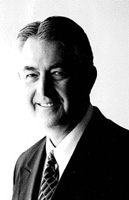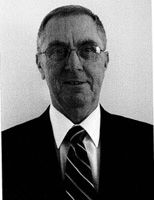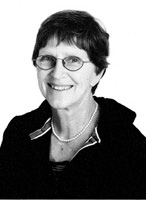 |
|||
 |
 |
 |
 |
Jerry Murphy Rochester |
Al Must Rochester Adams |
Al Pollard Kalamazoo Loy Norrix |
Bonnie Wall Lowell |
(click on Inductee's name to read 'description')
 |
|||
 |
 |
 |
 |
Jerry Murphy Rochester |
Al Must Rochester Adams |
Al Pollard Kalamazoo Loy Norrix |
Bonnie Wall Lowell |
(click on Inductee's name to read 'description')


To say that if Jerry Murphy hadn’t pioneered what became known as the 16-point rule, we wouldn’t have the current 18-point rule is a similar fallacy. Nevertheless, any coach whose team didn’t place first or second in the regional but still qualified for state competition has Jerry to thank for it. John McEnroe once said that present-day female tennis pros should give a portion of their winnings to Billie Jean King. In like manner, if you qualified for state competition as a third place regional team, perhaps you should promote a movement to establish a Murphy Day (We suggest regional Friday or Saturday) to celebrate the Murphy Rule.
Jerry once described his quest to right this wrong as an exercise as in “positive dissatisfaction.” To be sure, he was propelled by a certain amount of self-interest. Although he has always fielded strong teams of talented tennis players in a community with lots of advantages, he competes in a rough neighborhood: Perennial powers such as Bloomfield Andover and Lahser, Birmingham Seaholm and Groves, Troy and Troy Athens, and neighbor Rochester Adams. Too often, he has seen his very good teams stay home while kids his players had defeated during the season have gone on to compete in Midland because they were fortunate enough to play in a weaker regional.
Indeed, Jerry’s overall dual meet record is just a bit above .500. He has brought home 4 regional trophies and qualified for state 5 times in the course of his 35 years at the helm. But those who have competed against his kids know that they can play.
And that the man can coach. “My most memorable Murph story,” says Warren Block of Troy Athens (himself a Hall of Famer, Class of 2005) “is when we were walking along the bleachers during a match and the old wood bleachers at Athens gave out and he really messed up his leg as one leg went right through and he sank up to his crotch. But he kept on coaching.”
Actually, Jerry’s career in athletics centered around football and baseball at Pontiac Central. He captained both teams as a senior but even more remarkably, he captained the football team for an unprecedented three years. He did well for the freshman football team at MSU but an injury hampered him enough to call it quits on Duffy Daugherty’s team his sophomore year. His major exposure to tennis came through his parents who excelled in the sport during their younger years, his dad being a high school state runner-up in 1941 in both singles and doubles and his mother winning the 1945 state municipal mixed doubles crown.
Their son graduated from MSU in 1971 with a major in social studies and a minor in coaching. He also earned a master’s degree in exercise physiology. He loves teaching U.S. history. “I asked a recently hired new teacher who graduated from Rochester High School if she knew Jerry Murphy,” reports Doug Adams, assistant principal of Clio High School and MHSTeCA Hall of Fame Class of 2000. “She stated: ‘He’s the reason I went into teaching!’ This young teacher who we hired went on and on about the enthusiasm and love of his subject that Mr. Murphy shared with his students on a daily basis.” This was in 2008.
He also maintained his love for football and passed it on, coaching various squads at the head freshman, JV, and assistant varsity levels in the Rochester schools for 34 years. He gave up football coaching only because of the gender equity change of seasons. This means three years of varsity girls coaching and 35 at the helm of the boys resulting in 216 dual meet wins against some pretty stiff competition. He also found time to serve as our president from 2003 to 2005.
“Always a joy to coach against,” concludes Warren. Indeed, Jerry rubbed shoulders with some pretty stiff coaching competition as well. In both the Metro Suburban Activities Association and the Oakland Activities Association, he has over three and a half decades enjoyed the fellowship of Hall of Famers Jan Esper of Bloomfield Lahser (Class of 2004), Ed Waits of Southfield-Lathrup (2007), Warren Block of Troy Athens (2005), and Al Must of Rochester Adams (2010). From personal experience and on several levels, they understand more than most that Jerry Murphy belongs, alongside them, in the Hall of Fame.| Back to Top |

A self-described “late bloomer,” Al Must didn’t start playing tennis until his late teens --past high school -- but at the age of 18, he was good enough to be a tennis instructor at Camp Walden in Northern Michigan even though he was, as he puts it, an advanced beginner/beginning intermediate-type player. “Several friends worked with me to teach me both how to play and how to teach beginners at that time, and started me down the road,” he says.
While at MSU, several others who were skilled players continued his tennis education. “I learned fast,” he says. “By the time I attended graduate school at the University of Denver, I began to play tournaments.” He also got a job teaching for the Parks and Recreation Department of Littleton, Colorado and began coaching varsity tennis the first year he was hired at Delta High School. “I had a boys and girls team,” he says. “In addition, I was involved in both setting up and running a grass roots tennis program each summer to develop players in the rural part of the Western slope of Colorado. This was very rewarding and was a big part of the success of my teams in Delta. The pay was low as it was a low income area, but the rewards were tremendous.”
Indeed, Al’s teams at Delta were league champions for both boys and girls for all seven years he was the head coach. He was considered the area’s “tennis expert,” one who was hired to write a weekly column called “Tennis Tips” for the Delta County Independent.
Although Al may have been the proverbial Big Frog in a Little Pond in Colorado, this experience laid valuable groundwork for what he would accomplish when he moved back to Michigan in 1984. What Rochester Adams got when they hired him was an enthusiastic, knowledgeable and experienced individual who knew what took to win.
He would need all of his skills. The Metro Suburban League -- at the time comprised of Troy Athens, West Bloomfield, Bloomfield Lahser, Birmingham Groves, Rochester High School, and Southfield-Lathrup -- and coached by four individuals who would go on to the Hall of Fame – offered more than enough of a test for the ensuing 23 years (boys) and girls (10). Considering the competition, Adams didn’t dominate but the players did compete at a very high level. Given the area, the available training, and high expectations that go with advantages, Al was confronted with quite a challenge. “To compete in Oakland in Oakland County and compete against these coaches and teams was certainly an eye-opener and helped shape me into the coach I am today,” he says.
The results are in the numbers. Over the years, Al’s kids have notched over 325 wins. Fourteen of his teams have finished in the top ten of the state. This includes a state championship in 1987 for the girls, a second place finish for the boys in 2007, and a 3rd place finish for the boys in 1997. His teams have won 23 league championships and 18 of his teams have participated in the state finals. Twenty five of his players have received all-state recognition. Lots of them went on to play college tennis. One – Amy Frazier – did a bit more.
Al’s work has not gone unrecognized. He has received several coach of the year honors in both Colorado and Michigan at the regional, area, and county level. He was voted MHSTeCA Coach of the Year for Division 2 in 2007.
“To be sure, in Rochester I have been offered an opportunity to work with many highly skilled players,” he says. But Al has also developed his share. For over 20 years, he has spent his summers as the head pro at the Bloomfield Surf Club where he worked with a junior team program that went from 20 players (1985) to over 110 currently. He cofounded the North Oakland County Summer Suburban League which competes with seven other clubs in various age divisions. This helps feed high school teams at Lahser, Andover, and Troy. Some of these players have gone on to become all-state. Some have returned to the Surf Club to be teaching assistants. “The number of players I have taught and/or coached has got to be over 3,000,” he says. “The number of players I have introduced to the game is at least 1,000. That is what makes the profession so rewarding.”
Al also contributed to the political process that brought new courts to his community. “Together with Jerry Murphy, we made sure that new, top-of-the-line tennis facilities were included in the upgrades to athletic facilities several years ago at both Rochester and Adams High,” he says.
Yes, the tennis community of Rochester has been blessed over recent decades with the services of not one but two talented, hard-working individuals who, amazingly, enter the Hall of Fame in the same year.| Back to Top |

For over a half century, Kalamazoo has been known as, in the words of Arthur Ashe, “the Wimbledon of junior tennis.” At storied Stowe Stadium, spectators in the 1950s watched from above as a freckled-face redheaded Aussie named Rod Laver gave early indication of future greatness. In 1960, 18-year-old Dennis Ralston played there mere weeks after capturing the Wimbledon Men’s Doubles Championship with Rafael Osuna. Over the years, names such as Ashe, Connors, McEnroe, Sampras, Agassi, and Roddick have added to the aura.
Given the beauty of the venue and the excellence of the facilities, Kalamazoo has also been the mecca of high school tennis as well because the state finals in all classes were held there before the era of flight team championships began in 1977. In 1956, John Cook of Kalamazoo Central– who grew up within a short walking distance of the stadium -- defeated a young freshman named Ray Senkowski in a three set final for the state title (Senkowski won the USLTA 15 and under singles championship on those same courts and went on to play 1S for U of M). Familiar names such as Colby, Hodgman, Gill and Goodrich teamed together for Kalamazoo University High to break Jean Hoxie’s Hamtramck streak of 13 consecutive Class A state championships. At the very first state tournament in Midland where the team concept was first employed in 1977, Kalamazoo Loy Norrix ran away with the title, capturing seven of eight flight state championships.
In other words, to say that the community of Kalamazoo has been in the forefront of Michigan high school tennis history is an understatement, and not simply because of the venue. The community itself has supplied some impressive tennis talent. Thus, to step into such history is to confront very high expectations. After all, Kryn Rynbrand of Loy Norrix is in the Hall of Fame. So is Kiewiet, the coach of that 1977 team. And so is Carl Engels, coach of the Kalamazoo University High team that released the Hoxie Hamtramck stranglehold on Class A state championships.
And now so is Al Pollard, who as it turns out not only to fit right in but has contributed much more to the history of Kalamazoo high school tennis laurels. Taking over for Kiewiet in 1984 had to be a daunting prospect but he was well-prepared in that he had coached tennis teams at Kalamazoo Milwood Junior High School for eight years. Under his direction, the boys placed in the top ten (two sixth places and one fifth place) three times. The girls won a state championship (1991) and placed second twice (1990 and 1992). Pollard-coached teams enjoyed a total of 5 undefeated seasons and captured 14 league championships and regional titles as well as the state championship.
Al also served as the director of the Greater Kalamazoo Tennis Tournament 10 times and was a regional manager 10 times. Well-known and respected, he was voted Regional Coach of the Year 10 times (Six boys/Four girls), and was state coach of the year in 1991. “He was a motivator,” says Allegan’s Gary Ellis. “All of his kids improved during the course of the season under his coaching.”
In addition, Al has been a tennis official for the USTA National Junior/Boys Tournament since 1978. In the ’80 and ‘90s, he helped manage the WMU site for the tournament, enlisting such MHSTeCA luminaries as Gary Ellis, Jim Cummins, and Tim Coleman to aid him. Matches that he umpired matches for include competitors such as Andre Agassi, Jim Currier, Aaron Krickstein, Luke and Murphy Jensen, Andy Roddick, and the Bryan brothers.
Since his retirement from teaching and coaching in 2001, Al has stayed active. For a number of years, he worked the state tournaments under the direction of Tiger Teusink. He still helps out at the state final contests in Kalamazoo under Paul Ballard. He also umpires college matches and NCAA tournaments for WMU, MSU, Michigan, Notre Dame, and Kalamazoo College.
In other words, the man has not only won lots of dual matches, regional tournaments, and a state championship but he has also gone on to serve at a very high level in a variety of capacities. It is praiseworthy enough to be placed alongside his peers in the Michigan High School Tennis Coaches Hall of Fame at Genesys Racket Club in Grand Blanc. But he also belongs in the pantheon of influential individuals who have made Kalamazoo such a storied tennis community.| Back to Top |

“Bonnie Wall is one of the top ten coaches in Western Michigan,” says Hall of Famer Marty Snoap of Lake Odessa Lakewood. “No matter how good my team is for a particular year, we can beat most other teams, but never seem to beat a team that Bonnie’s coaching. But her courtesy, etiquette, court demeanor, and sense of fair play are such that I wouldn’t mind playing against her every couple of weeks.”
Indeed, one definition of a good coach might not be just that she fields good teams but that opposing coaches, however competitive, don’t mind losing to her. Another is that she is a “grass roots coach,” one who builds a team from virtually nothing and makes them a force. “I have known Bonnie since she took over a hapless Lowell program and have seen her build it into a very strong program in the Mid-Michigan area,” says Portland’s Jim Niebling. “Only through her hard work --- excessively hard work --- and dedication has this transformation been possible. Besides the usual summer program that she started, built, and continues to run, she also does a lot of those extras that distinguish her program, such as occasional newsletters to keep parents and fans informed of the happenings in her program.”
What is unusual, however, is that Bonnie started from scratch at Lowell after enjoying considerable success at two traditionally powerful Grand Rapids schools. At Forest Hills Central, her girls qualified for state 7 out of ten years that she coached there, the best state finish being 5th in 1983. At Forest Hills Northern, her girls qualified the last three years that she coached there and placed second in the state in 1997 and 1998.
“I have taught with Bonnie and I was an unpaid assistant for her with the girls before I took over the program,” says Forest Hills Central Hall of Fame coach Elliott Pearce. “I took over for Bonnie in 1983. She already had a program in great shape for me.”
“However, though my years of coaching at the Forest Hills schools look more successful on paper,” Bonnie says, “it has been these past ten years at Lowell where [husband and co-coach] Roger and I feel we have done the most for the game and the community.”
When they started coaching there, there was no summer program; therefore Bonnie wrote a proposal to a local foundation and started a five-week program for kids 5-18 at little expense. To be even more prepared, she and Roger attended the Dennis VanderMeer’s Tennis University at Hilton Head Island. “The first year of the program we enrolled 75 players,” she says. “This year we had over 170. Many families and students now fill our courts on summer evenings. It’s a great sight to see.”
“Our high school program is a respected one,” she adds. “For the past several years, both the LHS boys and girls teams have barely missed qualifying for state by one or two points at the regional meets.”
Lucky Lowell. What they got when Bonnie agreed to coach there was a husband and wife and four children who were named West Michigan Tennis Family of the Year in 2003. Roger and Bonnie both held national rankings in earlier years and have played many age level tournaments in their retirement years. Their two boys played varsity tennis in high school and their two daughters played for Kalamazoo College. In addition, a grandson currently plays for K College. Dedicated and knowledgeable fans, she and Roger have witnessed each of the four major tournaments: Wimbledon, the U.S. Open, the French, and the Australian.
Fortunately, Lucky Lowell knows what they’ve got, according to Bonnie. “Parents and kids have been so appreciative and supportive of it (the tennis program) that Roger (now 83 years old and I (70) will continue to teach and direct this program for as long as we are able. I would have never believed back in 1974 when I was teaching English at Forest Hills Central that in fall 2009 I’d still be coaching high school tennis.”
“I can only shake my head and wonder why I’m in the Hall of Fame without Bonnie,” concludes Marty.
Marty, shake your head no longer.| Back to Top |